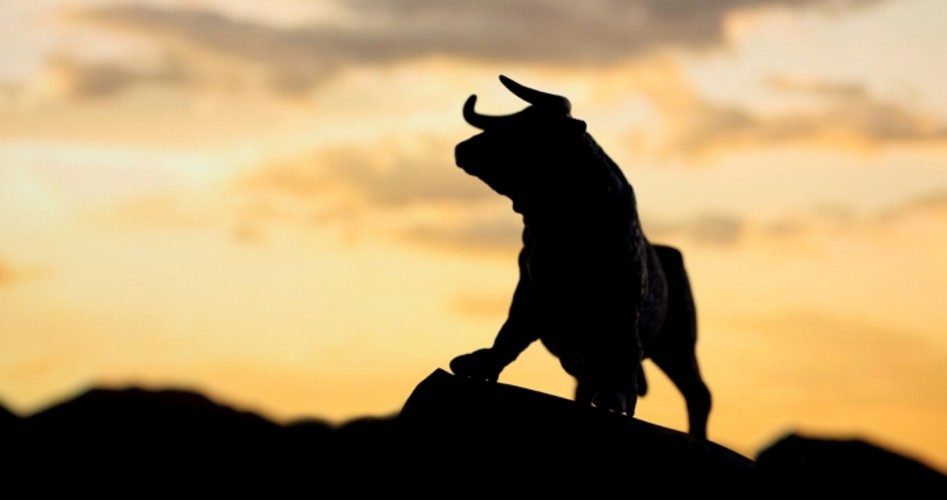
“Nobody wants to talk about this being a bubble. It’s the greatest asset inflation bubble we have seen in 20 years,” Ralph Jainz, asset management fund manager for Centricus, said Monday on CNBC’s program Squawk Box Europe.
Jainz and others contend that tech equities are overvalued, and a correction is inevitable. Investing expert Mark Mobius is even predicting a market “correction” of as much as 30 percent. Jainz explained that “defensive” stocks — those that tend to do relatively better in a bear market than other stocks — are presently not popular. Healthcare, pharmaceuticals, and telecommunications are examples of “defensive” stocks. On the other hand, Netflix is up 104 percent this year, as investors shift their portfolios to such stocks that are trendier. Another stock in that category is Amazon, which is up nearly 47 percent in 2018.
“Dispersion levels have been rising; people have been selling the losers to buy the winners,” Jainz said.
The present bull market will probably continue for several more months, Jainz conceded, but he foresees a correction within the next year to 18 months.
Of course, such talk is generally unpopular among investors, who argue that the market always comes back in the long run. But some investors do not have that long to wait, because they have to live in the present, as well as the future (if they are still alive to see it). For example, after the 1929 stock market crash, it took 20 years for the market to recover its value.
Fasanara Capital of London, an asset-management fund, is, if anything, more pessimistic than Jainz. They are predicting a full-scale crash, due to increasing frequency of value-at-risk shocks — swift market corrections. They contend this is due to weaknesses in global markets. While many market predictions historically do not happen, Fasanara did predict the February market correction, two weeks before it happened.
Even more ominous, Fasanara said that today’s stock market is even more overvalued than the market of 2000 before the “dot-com” boom and bust, the 2007 real estate market boom and bust, and even the infamous Crash of ’29.
In other words, a bust to end the bubble should be expected at some point. Despite these historical examples, investors think their own time is going to be different. As Jainz explained, “You normally need a generation to come along, a new generation to make the same mistake that we all did 20 years ago. And I probably won’t see another one until I retire in 20 years’ time.”
But are these cycles of boom and bust just a normal part of a free market?
Hardly.
Speaking of predicting a bust, it was renowned economist Ludwig von Mises, the father of the “Austrian” school of economics, who predicted the 1929 collapse. Mises did not blame the free market, however, but rather government policies — particularly inflation.
Inflation is often mistakenly thought of as “rising prices,” but that is much like saying wet streets cause rain. Rising prices are a result of government-caused inflation, which is an increase in the money supply. In the 1920s, the money supply increased an astounding 62 percent. Because the price level remained relatively stable in the 20s, however, many historians have missed the effect of inflation, caused in this case by America’s central bank known as the Federal Reserve.
The 1920s saw amazing increases in production levels. Normally, this would have caused prices to fall, because increases in supply should make the goods cheaper. Unfortunately, the belief of the time was that higher prices and higher wages equaled prosperity. This caused the Federal Reserve to keep interest rates lower than they would have been under a free market situation. This resulted in more money being placed into circulation than should have been the case. As more money circulated, each dollar then became worth less than before, thus driving prices back up. (Falling prices would have increased the “real wages” of average Americans, thus making average Americans wealthier — if FED-generated inflation had not been occurring.)
As money poured into the economy, stock prices rose to higher levels than would otherwise have been the case. In other words, stocks were “overvalued,” as is the case today with much of the stock market. Once interest rates are eventually allowed to rise closer to a free market level, this “over-valued” condition becomes apparent to even the average investor. Usually some event is then cited as “bursting the bubble.”
In the 1920s, it was the collapse of the Florida real estate market, among other things. In 2000, it was the end of the “dot.com boom.”
But, the reality is that it was inflation, caused by government, not by businessmen, that brought on the bust. When the bust inevitably happens, many throw up their hands, and blame private industry, offering the same old tired solutions of increased government regulations — and more inflation, or as it is sometimes called in modern parlance, “quantitative easing.”
Photo: Kameleon007/E+/Getty Images



